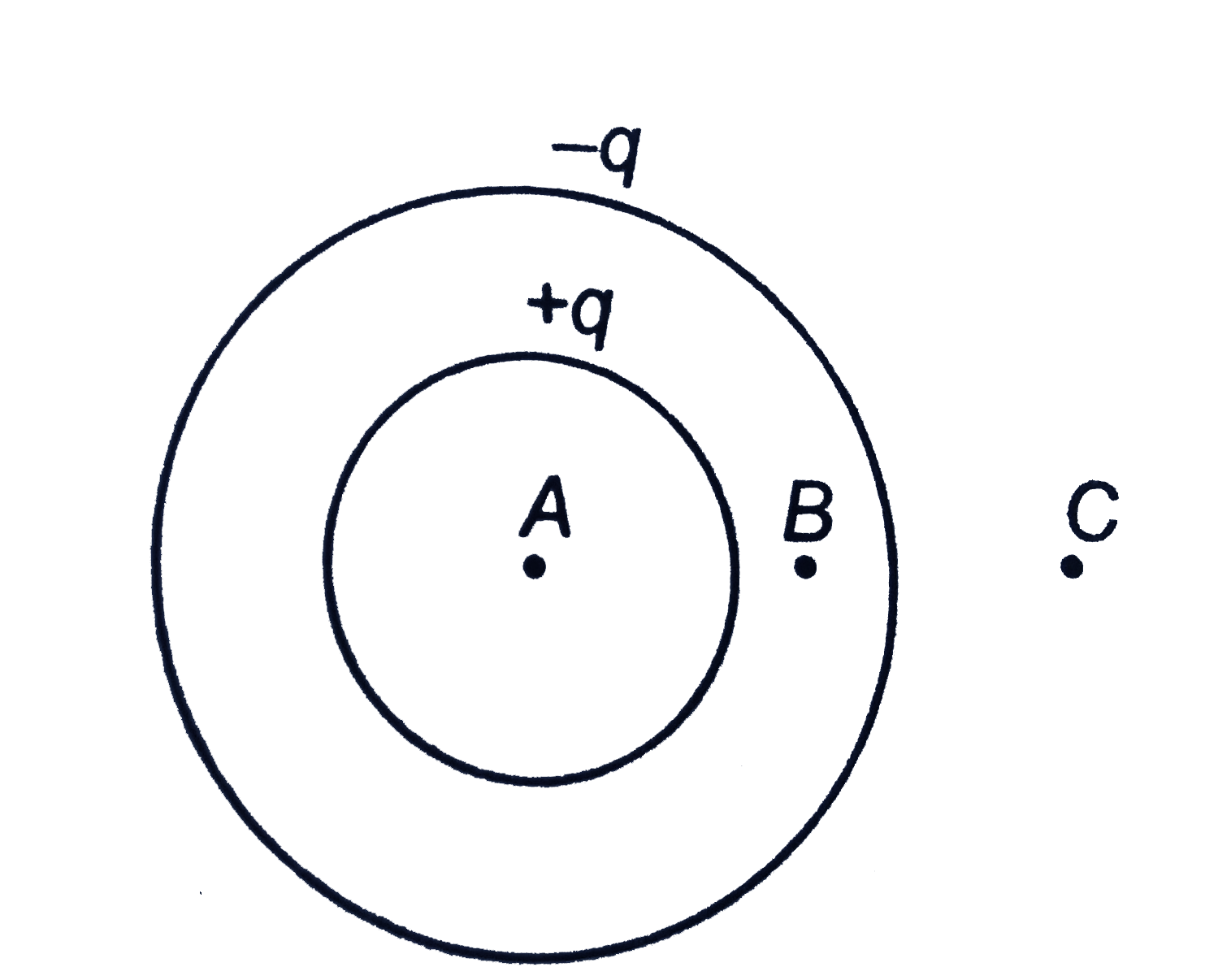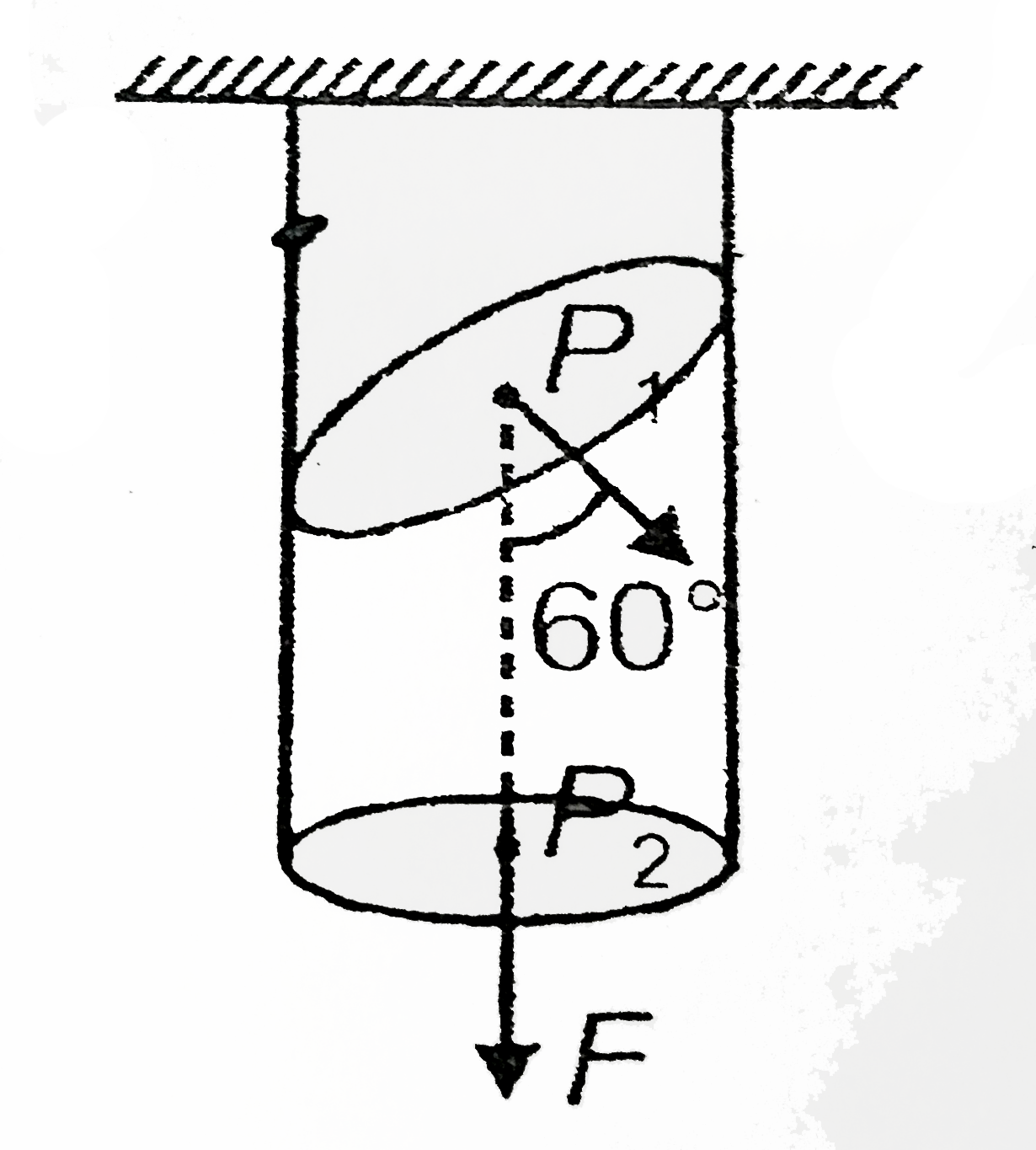A rod is hinged (free to rotate) ast its centre O as shown in figue. Two point charge +q and +q are kept at its two ends. Rod is placed in uniform electric field E as shown. Space is gravity free. Choose the correct options.

Net force from the hinge on the rod is zero
Net force from the hinge on the rod is left wards
Equilibrium of rod is neutral
Equilibrium of rod is stable
The correct Answer is:C
Step by step video & image solution for A rod is hinged (free to rotate) ast its centre O as shown in figue. Two point charge +q and +q are kept at its two ends. Rod is placed in uniform electric field E as shown. Space is gravity free. Choose the correct options. by Physics experts to help you in doubts & scoring excellent marks in Class 12 exams.
Updated on:21/07/2023Topper's Solved these Questions
- ELECTROSTATICSBOOK - PHYSICS GALAXY - ASHISH ARORACHAPTER - ELECTROSTATICSEXERCISE - Unsolved Numberical Problems
73 Videos
- ELECTROSTATICSBOOK - PHYSICS GALAXY - ASHISH ARORACHAPTER - ELECTROSTATICSEXERCISE - Numerical MCQs Single options Correct
64 Videos
- ELECTROMAGNETIC INDUCTION AND ALTERNATING CURRENTBOOK - PHYSICS GALAXY - ASHISH ARORACHAPTER - ELECTROMAGNETIC INDUCTION AND ALTERNATING CURRENTEXERCISE - Advance MCQs
33 Videos
- GEOMETRICAL OPTICSBOOK - PHYSICS GALAXY - ASHISH ARORACHAPTER - GEOMETRICAL OPTICSEXERCISE - Unsolved Numerical Problems
107 Videos
Similar Questions
A charge Q is placed at the centre of the line joining two point charges +q and +q as shown in figure. The ratio of charges Q and q is

View SolutionA positive point charge Q is kept (as shown in the figure) inside a neutral conducting shell whose centre is at C. An external uniform electric field E is applied. Then :

View Solution
Knowledge Check
Two concentric spherical shells have charges +q and −q as shown in figure. Choose the correct options.
 AAt a electric field is zero but electric potentiasl in non zeroBAt B electic feid and electric potential both are non zeroCAt C electric field is Zero but electric potential is non zeroDAt C electrilc fiedl and electric potential both are zero
AAt a electric field is zero but electric potentiasl in non zeroBAt B electic feid and electric potential both are non zeroCAt C electric field is Zero but electric potential is non zeroDAt C electrilc fiedl and electric potential both are zeroA charge particle q is projected in an electric field produced by a fixed point charge Q as shown in figure. Mark the correct statements.
 AThe path taken by q is a straight line.BThe path taken by q is not a straight line.CThe minimum distance between the two particles is qQ2πε0+√qQ2πε0+4m2u2a22mu2DVelocity of the particle q is changing in both magnitude and direction.
AThe path taken by q is a straight line.BThe path taken by q is not a straight line.CThe minimum distance between the two particles is qQ2πε0+√qQ2πε0+4m2u2a22mu2DVelocity of the particle q is changing in both magnitude and direction.A bead is contrained to move on rod in granvity free space as shown in figure. The rod rotating with ,angular velocity and angulnr acceleration α about its end. If μ is coefficient of friction. Mark the correct option. ( Rod rotates in the plane of paper.)
 AIf μ=ω2α friction ion on bead is static in natureBIf μ≥ω2α friction on bead is kinetic in natureCIf μ≤ω2α friction is staticDIf bead does not slide relative to rod. Friction will not exist between bead and rod.
AIf μ=ω2α friction ion on bead is static in natureBIf μ≥ω2α friction on bead is kinetic in natureCIf μ≤ω2α friction is staticDIf bead does not slide relative to rod. Friction will not exist between bead and rod.
A rod OA is suspended with the help of a massless string AB as shown in figure. Rod is hinged at pointO. Draw free body diagrame of the rod.

View SolutionA massless uniform rod is subjected to froce F at its free end as shown in figure. The ratio of tensile stress at plane P1 to stress at P2 is

View SolutionTwo particles, carrying charges -q and +q and having equal masses m each, are fixed at the rod is clamped at an end and is placed in a uniform electric field E with the axis of the dipole along the electric field. The rod is slightly tlted and then released. Neglecting gravity find the time period of small oscillations.
View SolutionA massless rod of length L has two equal charges (q) tied to its ends. The rod is free to rotate in horizontal plane about a vertical axis passing through a point at a distance L4 from one of its ends. A uniform horizontal electric field (E) exists in the region. (a) Draw diagrams showing the stable and unstable equilibrium positions of the rod in the field. (b) Calculate the change in electric potential energy of the rod when it is rotated by an angle Δθ from its stable equilibrium position. (c) Calculate the time period of small oscillations of the rod about its stable equilibrium position. Take the mass of each charge to be m.
View Solution
A uniform rod of length L and mass m is free to rotate about a frictionless pivot at one end as shown in figure. The rod is held at rest in the horizontal position and a coin of mass m is placed at the free end. Now the rod is released The reaction on the coin immediately after the rod starts falling is
View Solution
